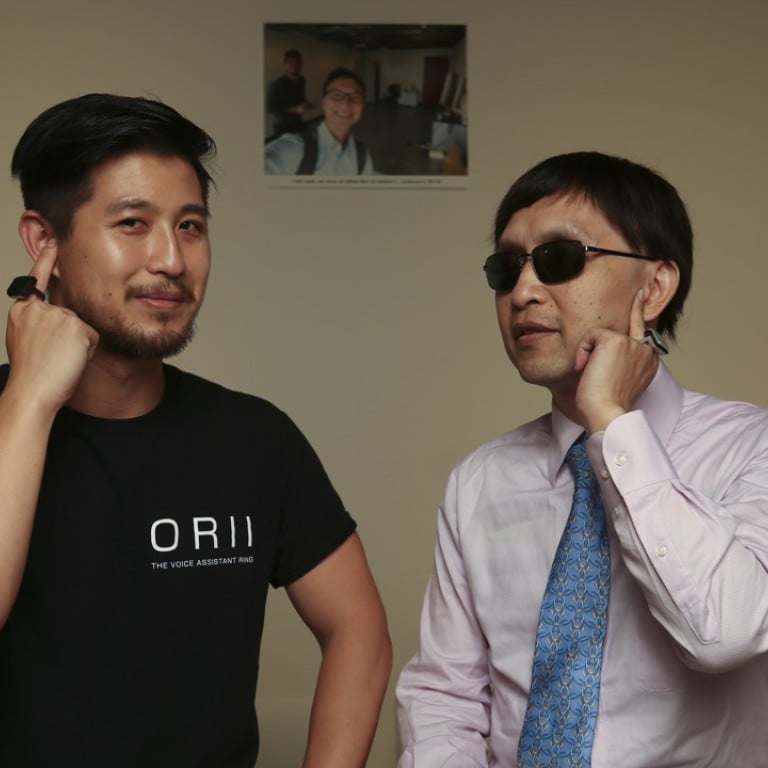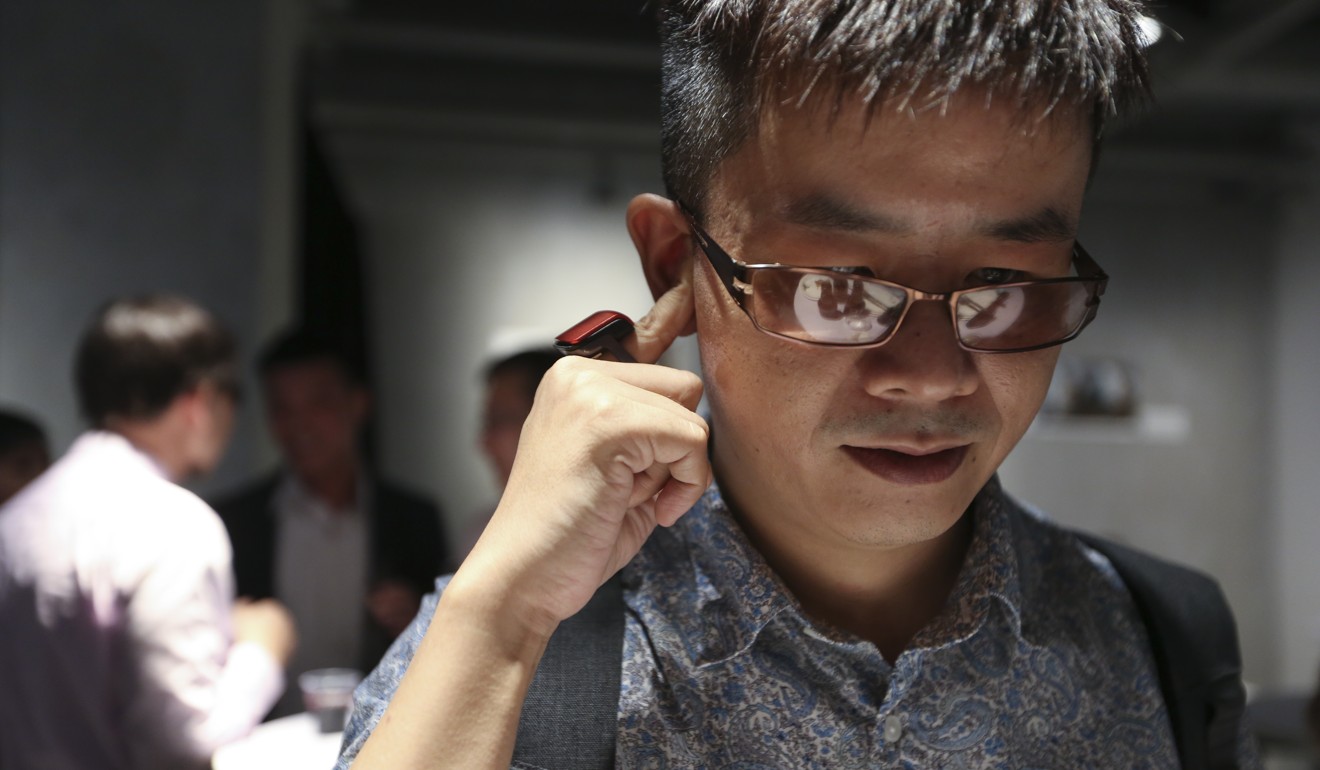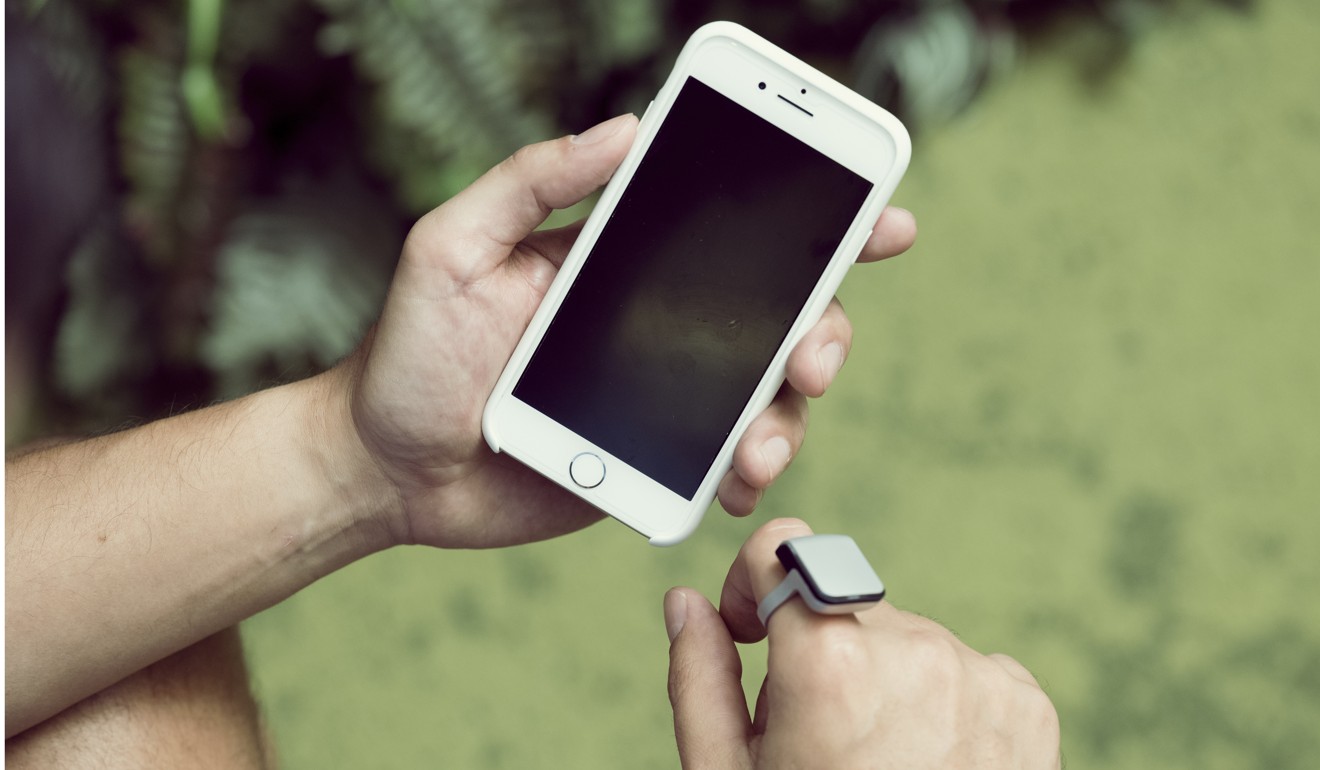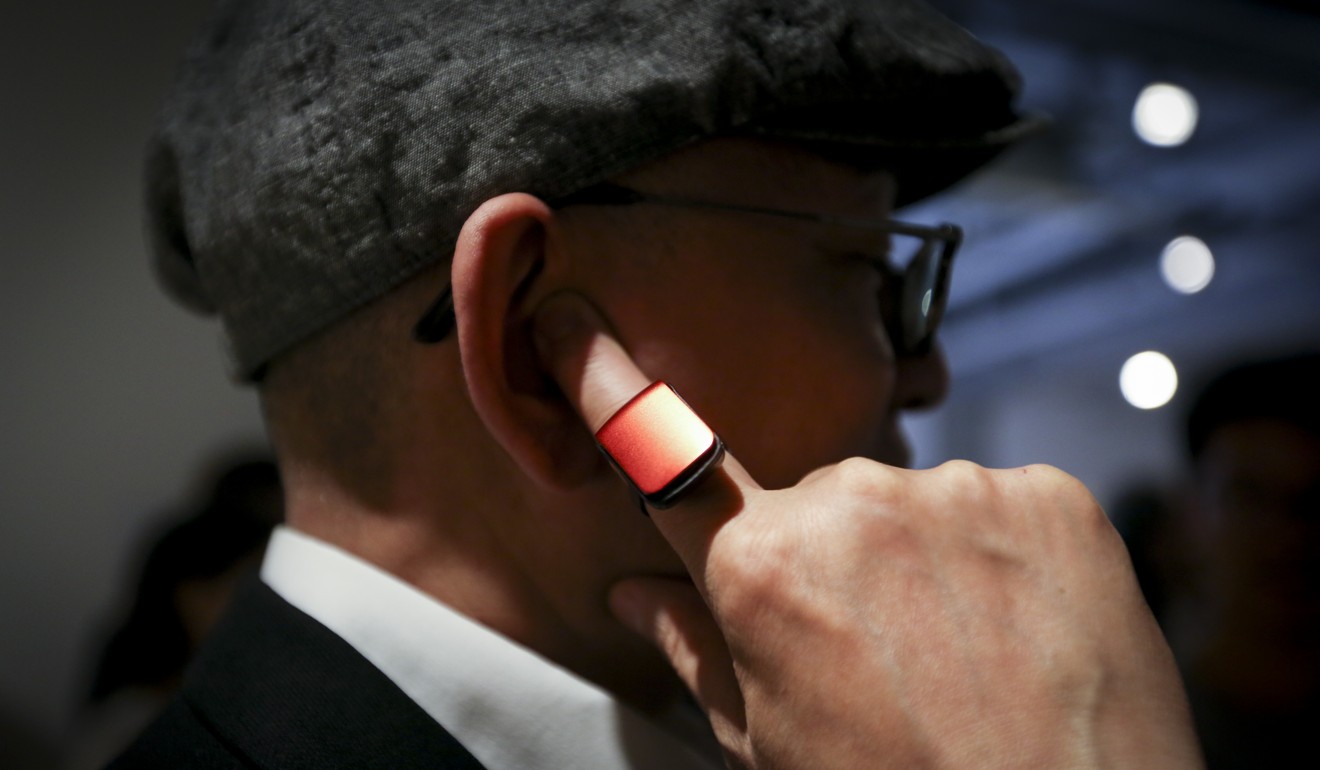
Innovative voice activated ring from Hong Kong start-up turns your finger into a phone
Using bone conduction technology to channel smartphone sounds into the ear, the Orii ring, part of the ‘screen-free revolution’ of wearable devices, was inspired by the challenges faced by the visually impaired
Hong Kong start-up Origami Labs is looking to change the way we interact with our mobile phones with the release of its innovative new wearable product Orii this month.
Orii, a voice-activated ring that uses bone conduction technology to channel smartphone sounds into a user’s ear, is intended to reduce the amount of time we spend staring at our phone screens.

Kevin Wong, co-founder and chief executive of Origami Labs, says Orii is the world’s first voice-powered smart ring. “We basically turn your finger into a voice-enabled smartphone.”
Here’s why Hong Kong’s new start-up board is like a casino in the Wild East
Orii sends sounds as vibrations through the finger which go directly into the ear when the finger is placed next to it (only the user can hear them). The ring also includes a microphone that picks up voice commands to control your smartphone’s inbuilt voice assistant function.
The invention was inspired by the challenges faced by Wong’s father, Peter, a visually impaired programmer who helped develop Microsoft’s accessibility tools.
Peter Wong, also Origami Lab’s technical adviser, says the device could be used in many situations where it would be convenient not to use a screen.
“We started off with the idea of how it could help people with visual impairment, then it quickly developed as we started to think about the broader market,” he says. “We learnt from the visual impairment experience to benefit the broader population. It’s part of the screen-free revolution.”

Wong says that growing up with someone who is visually impaired helped him understand the issues they face.
“We’ve always been interested in voice interfaces and technology, so we focused on the ability to use your hand as a smartphone without having to take out your phone. That was the idea from day one,” he says. “From there, we built many products that could achieve these dreams. One of those was a ring.”

It’s for when you need … that instant access that’s just one touch of the ear away. It’s the accessibility that makes this wearable special
Wong says the team faced considerable technical challenges in developing the Orii. “No one had tried putting bone conduction into a wearable before. There were a lot of technical and mechanical hurdles to overcome before we could turn [the idea] into a wearable,” he says.
Today’s Orii is actually the 17th version of the product they’ve made in just a year and a half. “Every prototype taught us more about how to make it smaller, make the audio quality better, or make the experience smoother.”
How good are Hong Kong’s start-up incubators and accelerators?
To send a message or make a call, the user presses their finger onto their ear and taps the button on the side of the ring with their thumb, activating the device and triggering the voice assistant. Speaking then initiates the call or message. It might sound like a scene from a spy film, and is sure to draw curious glances in the street, but Wong doesn’t expect people to go around with their finger plastered to their ear all the time.
“It’s for when you need to use it – that instant access that’s just one touch of the ear away. It’s the accessibility that makes this wearable special.”

The ring is part of a class of devices known as the Internet of Things (IoT), a network of electronic items all connected to the internet. Existing “smart” products include coffee makers, washing machines, lamps and fitness watches.
Analyst firm Gartner estimates that there will be more than 26 billion connected devices in use by 2020, while management consultants McKinsey and Company say the total potential economic impact of IoT could be as much as US$11.1 trillion per year by 2025.

“Wearable adoption is accelerating; what was considered a fad just a few years ago has become a global movement,” Wong said in an interview last year. “Today in the US alone, 21 per cent of online adults use a wearable device.”
Wong met Origami Labs’ chief operations officer, Marcus Leung-Shea, when they were roommates on an MBA leadership development course at the Hong Kong University of Science and Technology (HKUST). They discovered they had a mutual interest in wearable technology.
Their ideas for a new product slowly begin to take life after they were joined by Yan Shun Li, now the company’s chief technology officer, who brought his knowledge of engineering to the project.

During product development, the team pitched their idea – originally known as Wispering – at several HKUST design and entrepreneurship competitions and won early financial support from the Kowloon Watch Group. Last year, they completed Wearable IoT World’s accelerator programme for tech start-ups at Cyberport.
More impressively, last October the team took home the US$120,000 grand prize in Asia’s first Elevator World Tour – a competition where start-ups pitched to judges during the 60-second ascent to the 100th floor of the ICC, Hong Kong’s tallest building. They also secured investment from e-commerce company Alibaba, which took on Origami as one of its portfolio companies last December. (Alibaba owns the South China Morning Post.)
Never too old to start up: 70-year-old entrepreneur completes incubation programme for Hong Kong tech companies
Student Brian Ma, present at Orii’s launch event for the “buzz and the atmosphere”, gave the device the thumbs up. “It’s really cool. It’s not something you usually see … and would reduce the hassle you have with earphones.
“I’d buy it because I like the idea of privacy, especially for listening to things in scenarios where it’s hard to put on earphones.”

